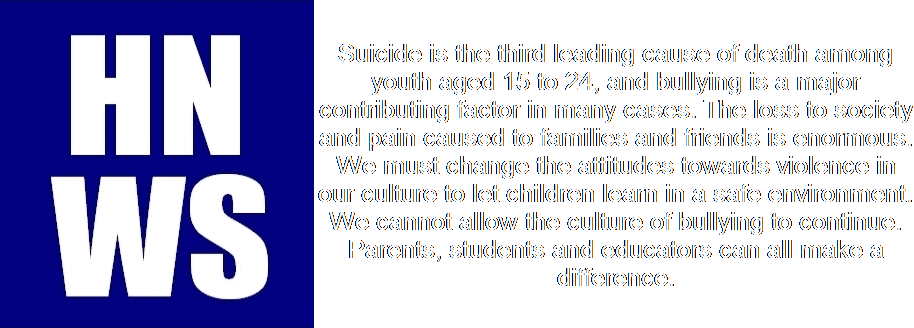Today's media, along with thousands of well meaning advocates online have made a habit of reporting every suicide in ways that may be risky. Obviously, context is everything; there are times when various aspects of a story make reporting certain details relevant or important to an accurate report. That said, we need to be very careful about how we go about reporting suicides, especially to teens.
According to the International Association for Suicide Prevention and The World Health Organization, the following guidelines are good ideas to follow when reporting on suicides:
• Avoid language which sensationalizes or normalizes suicide, or presents it as a solution to problems.
This is often done through quotes included in the media article, from friends, family or health care "experts". Suicide is never the answer to a person's problems, so why report that the victim may have felt that it was?
• Avoid prominent placement and undue repetition of stories about suicide.
Like any sensationalized issue, media sources tend to play a suicide story for as long as they can. This is not only unnecessary, it also shows disrespect for the bereaved and can potentially become exploitative.
• Avoid explicit description of the method used in a completed or attempted suicide.
I cringe every time I see a reported suicide accompanied by a detailed description of the victim's method. It's ghoulish in my opinion, and serves no useful purpose. It can, however, serve as an potential instruction manual for a person in crisis.
• Avoid providing detailed information about the site of a completed or attempted suicide.
See above, same reasoning.
• Word headlines carefully.
Sensationalistic wording only serves to highlight the tragedy beyond what is reasonable, trivializing a family's pain. There are many more respectful and meaningful ways to word headlines.
• Exercise caution in using photographs or video footage.
Although the idea of "putting a face to the tragedy" is commonly used as a justification for repeatedly publishing a victim's face in stories, I believe that decision should be left to the family. ( At the time of the original publication of this list, so-called viral videos made by suicide victims had yet to become common. Today, of course, the situation is different. I have no information on what effect, either negative or positive, that such videos may have on others ).
• Take particular care in reporting celebrity suicides.
The glamor and fame of celebrities can have a powerful effect on impressionable youth. Try to compassionately highlight any mental health or drug problems which may have played a role, rather than the glamorous lifestyle. The loss of a celebrity is the loss of a human being, just like any other, money and fame don't negate that truth.
• Show due consideration for people bereaved by suicide.
This is a big problem. Every day I see headlines that show absolutely no awareness by the authors of the pain that their words could be causing the family of the deceased. The mainstream media can be brutally overwhelming and the spotlight is not where every family wants to be. How would you feel if it was your family being dissected in the media?
• Provide information about where to seek help.
Absolutely every time! Let your readers know there are people that can help them. You may save a life.
• Recognize that media professionals themselves may be affected by stories about suicide.
Reporters, editors and authors are people too, we can all be affected by tragedy. We must be careful to keep emotions like anger and the possibility of depression in mind when relating opinions or reporting stories.
Further Reference and Reading
http://www.nasponline.org/resources/principals/Suicide_Clusters_NASSP_Sept_%2009.pdf (NASP)
Suicide Clusters and Contagion
By Frank J. Zenere, School psychologist for the Miami–Dade County
Public School’s Student Services Crisis Team.
The Search to Identify Contagion Operating Within Suicide Clusters in Indigenous Communities in Northern Territories, Australia
by LEONORE HANSSENS, NT Board Representative, Suicide Prevention Australia
Suicide Prevention Resource Center Media Reporting recommendations
http://www.sprc.org/library/sreporting.pdf (CDC, et al)
Dr. Sally Spencer-Thomas
http://sallyspencerthomas.blogspot.ca/2012/01/five-things-you-can-do-with-social.html
The Cultural Dynamics of Copycat Suicide (Peer reviewed article)
by Alex Mesoudi
http://www.plosone.org/article/info:doi/10.1371/journal.pone.0007252